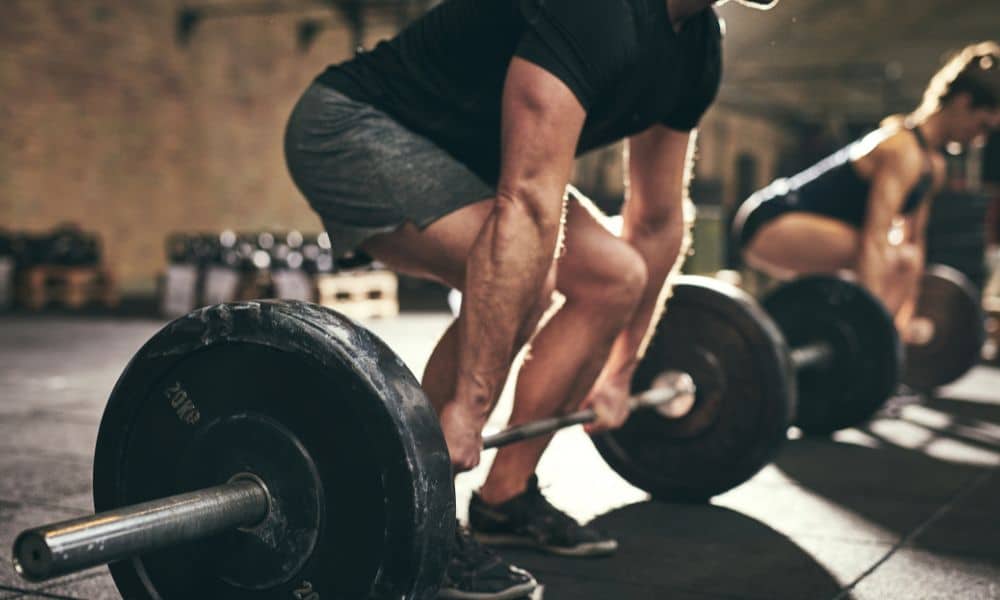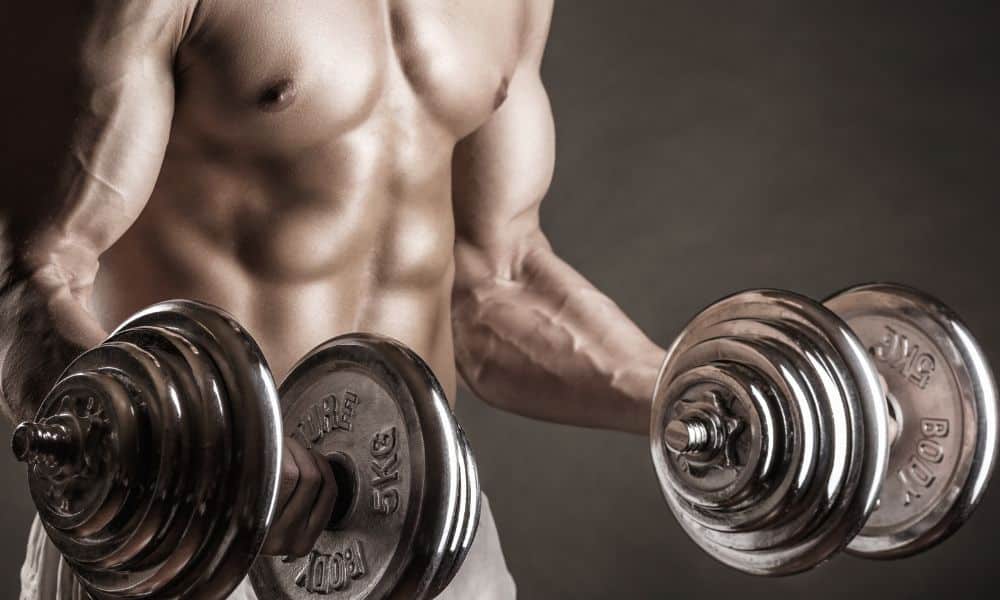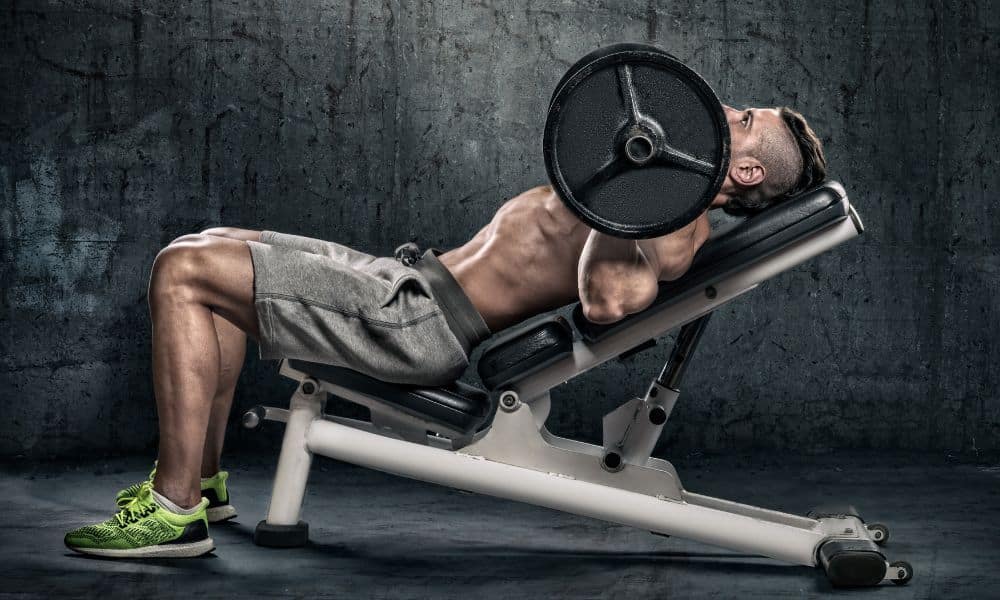How do you lift more weight with the deadlift? The deadlift is the most effective weightlifting movement that you can do in the gym. The deadlift is the perfect compound movement. It uses every muscle, from your traps to your calves. Bodybuilders, Olympic lifters, and athletes have long used the deadlift to build strength, pack on muscle mass, and improve overall athletic performance.
We can perform the deadlift with a barbell or dumbbell, making it a versatile exercise that adapts to different fitness levels. In addition, it is a natural and functional activity. What is more simple than bending down and picking up something? Many argue that the deadlift is the king of all exercises because it works out more muscles than any other exercise.
Also, we can use it to measure overall strength and recovery because it tests handgrip strength as you lift the weight. If you don’t wish to try your handgrip, you can use weightlifting hooks to lift more weight with the deadlift.
How does the deadlift benefit bodybuilders?
The deadlift is a highly effective exercise for bodybuilders because it trains many muscle groups simultaneously. It’s also an excellent exercise for developing strength and power.
Also, the deadlift helps to improve posture and can help prevent back injuries. Finally, the deadlift is a great way to add mass and definition to the back muscles.
How can the deadlift help to improve posture?
The deadlift can help improve posture by strengthening the back and shoulder muscles. In addition, the exercise helps to lengthen the spine and improve flexibility in the hips. By improving posture, the deadlift can also help to prevent back injuries.
How can the deadlift add muscle mass to a bodybuilder?
Adding muscle mass to the back, legs, and shoulders can be done with the deadlift. This exercise works out many muscle groups simultaneously, which helps to stimulate growth.
The deadlift stimulates growth by taxing the nervous system, which controls hormones and neurotransmitters. The nervous system’s critical hormones to respond to the deadlift are testosterone, HGH, and IGF.
The muscle groups the deadlift works, including the:
- Quadriceps
- Glutes
- Hamstrings
- Back muscles
- Shoulders
- Core muscles
What joints does the deadlift work?
We use several joints to perform the deadlift, but the main ones are the hip and knee joints. The hip joint handles most of the movement in the deadlift, while the knee joint provides stability and helps to keep the body in proper alignment.
Other joints used in the deadlift include the ankle joint, the shoulder joint, and the elbow joint. Each of these joints plays a vital role in the movement and helps to keep the body stable and aligned.
How does the deadlift affect the nervous system?
There is a lot of debate surrounding how the deadlift affects the nervous system. Some experts believe that the lift can cause severe damage to the spine, while others claim it is one of the safest exercises you can do. The deadlift has some risks, but you can minimize these by following the proper form.
When done correctly, the deadlift can be beneficial for the nervous system. It helps to improve nerve function and can even help protect against injuries. The deadlift strengthens the spine’s muscles, providing extra support and protection. In addition, the deadlift increases blood flow to the brain and helps to improve cognitive function. So, if you are looking for exercise that is good for your nervous system, the deadlift is a great option.
Just practice proper form and avoid putting too much weight on your spine. You can test the strength and health of your nervous system with your handgrip. As you become fatigued, you will notice your handgrip becomes weaker. One critical factor in building a solid deadlift is choosing your supporting exercises based on your weaknesses.
This may include your upper or lower back, hamstrings, quadriceps, or glutes. Each time you go to the gym to lift, you must strengthen these muscle groups to support your heavy deadlifts.
Please choose one of the following movements and train it heavily, once each week for two weeks, then move on to the next movement. Your goal should always be to beat your record from the previous week.
Standard Deadlift – The barbell is on the floor with you standing over it. Squat down to grab the bar and let your quadriceps bend slightly above parallel to the floor. This movement builds your deadlift power.
Straight-Legged Deadlift – The barbell is on the floor. Bend at your waist to grab the bar, but only slightly bend your legs. Your legs should be nearly straight. The focus is on training your lower back, hamstring, and glutes.
Elevated Deadlift – You change this movement by standing on a four-block of wood or sturdy step using the same start position as the standard deadlift. This lift creates a more challenging leverage point for pulling the weight and builds your quads, hamstrings, and lower back.
Rack Pulls – This movement is quite simple. In the squat rack, set the pins just below your knees. Rest the barbell on the frame and pull the weight up. This lift is an abbreviated motion for the deadlift but helps build hand strength, lower back, upper back, and glute power.
How to perform deadlifts safely and correctly.
- Stand with your feet shoulder-width apart from the bar on the floor, lightly touching your shins. Grab the barbell slightly wider than shoulder-width. Use an overhand handgrip or an alternate grip (one overhand and one underhand).
- Adjust your posture. Keep your back straight; tighten your core. Hold your shoulders back, squeezing your shoulder blades. Also, ensure your chest faces forward. Finally, ensure you do not round your back throughout the lift.
- Grip the bar tightly and pull the weight up. Your legs will generate the power needed to lift it. Extend your entire body. At the top, lock out your body, using your upper body to hold the weight in place. Also, your body should now be upright, with the bar around the middle position of your thighs.
- Slowly lower the weight to the ground in a controlled manner while maintaining your posture. Keep the bar in contact with your body throughout the movement and do not use momentum and bounce the weight back up, as this can cause injury.
The last word on how to deadlift more weight to build strength and power
If you want to deadlift heavier weights, use the correct form. This includes maintaining a neutral spine, keeping your shoulders down and back, and engaging your core. When lifting heavyweight, it’s also essential to focus on pushing through your heels rather than your toes. Also, if you can maintain proper form and focus on pressing through your heels, you’ll be able to lift more weight and see better results in no time.
Use a weight that is challenging but manageable. Start with three sets of five repetitions and work your way up. When you can complete all three sets with excellent form, increase the weight by 5 or 10 pounds. By following these simple tips and paying attention to your body’s cues, you should be able to lift more weight than ever before.
Give these tips a try next time you hit the gym, and see how much progress you can make! What has been your experience with the deadlift? If you or someone you know is considering bodybuilding, share this article on Facebook or Twitter so that others can learn more about building muscle.




